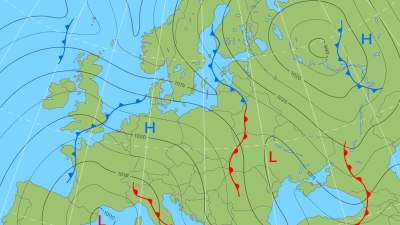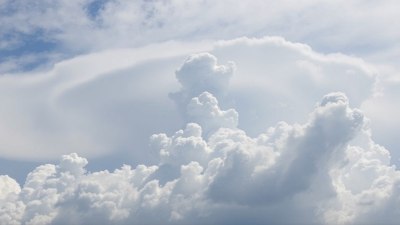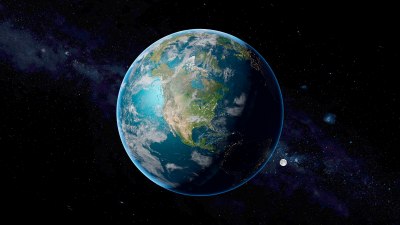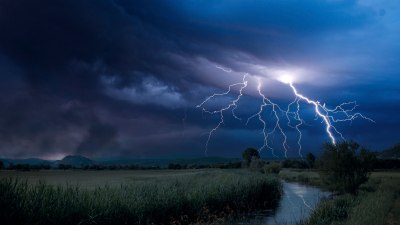How the Sahara Desert is Slowly Trying to Take Over More of Africa
Explore the encroachment of the Sahara Desert and its impact on Africa's landscape and communities.
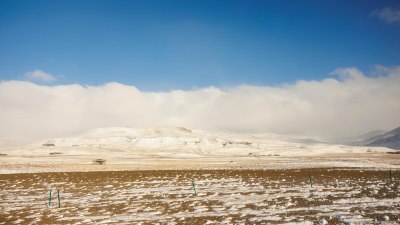
The Sahara Desert, known for its vast arid landscapes, extreme temperatures, and iconic sand dunes, continues to grow and reshape the face of Africa. Each year, the desert extends its grasp into surrounding regions, bringing with it a myriad of environmental, social, and economic consequences that challenge the resilience of local communities and wildlife. This article delves into the mechanisms behind the desert's expansion, the ecological and cultural impacts on Africa, and the strategies being employed to combat its relentless advance.
Since ancient times, the Sahara has been a region of great intrigue and mystery. Historically, it served as a barrier that separated various cultures and civilizations. Yet in contemporary times, it has become a battleground in the fight against climate change, desertification, and diminishing arable land. The desert covers approximately 9.2 million square kilometers, stretching across eleven countries and influencing millions of lives. With global climate changes exacerbating the conditions that lead to desert expansion, many areas that were once fertile are facing the dire consequences of encroaching sand dunes.
The Phenomenon of Desertification
Desertification is a process that transforms fertile land into desert as a result of various factors including climatic changes and human activities. In Africa, this phenomenon is driven by multiple forces such as deforestation, unsustainable agricultural practices, and overgrazing. As vegetation is stripped away, the soil loses its ability to retain moisture, leading to a cycle of degradation that further accelerates the situation. The Sahara is expanding southward at an alarming rate, estimated to be approximately 5 to 10 kilometers per year, and this unchecked growth poses severe threats to agricultural productivity, water resources, and the livelihoods of millions.
Climate Change and Its Role
Climate change stands as one of the pivotal culprits behind the Sahara’s expansion. As global temperatures rise, altered precipitation patterns have led to longer periods of drought in the Sahel region—the strip of land just south of the Sahara. Traditionally, this area has relied on seasonal rains for agriculture and sustenance; however, climate models predict that rainfall will become increasingly erratic. The unavailability of water has forced communities to adapt or perish, resulting in migrations, social tensions, and conflicts over dwindling resources.
Impact on Communities
The implications of the Sahara’s encroachment are particularly dire for local populations. As the desert expands, traditional agricultural zones are diminished, leading to food insecurity and economic instability. Farmers who once cultivated crops now face an unyielding landscape that cannot sustain their needs. In regions where relying on agriculture was a way of life, families struggle to adapt to the realities of a changing climate. The resultant desperation has spurred migration, with individuals and families seeking refuge in urban areas or across borders, only to find their struggles compounded by overcrowding and competition for available jobs.
Wildlife and Biodiversity at Risk
The Sahara is not just an arid environment; it is home to a unique array of flora and fauna that have adapted to survive its harsh conditions. With the desert’s expansion, delicate ecosystems face unprecedented stress. Species that rely on specific habitats are forced to migrate or face extinction as their environments disappear. Rain-fed ecosystems are failing, and migratory paths for wildlife are disrupted, affecting predator-prey dynamics that have existed for millennia. This collapse not only threatens biodiversity but also disrupts natural processes that are vital for ecosystem health.
International Responses and Local Initiatives
Recognizing the dire threats posed by desertification, the global community has mobilized resources and initiatives aimed at combating this pressing issue. Projects such as the Great Green Wall, an ambitious reforestation initiative across the Sahel, aim to restore degraded land, enhance food security, and create jobs. This initiative seeks to establish a barrier of trees spanning thousands of kilometers, revitalizing ecosystems and providing livelihoods for communities along the way. However, it requires a collaborative effort among governments, NGOs, and local populations to achieve its goals and ensure its sustainability.
Furthermore, local initiatives focusing on sustainable land-use practices, such as agroforestry, have shown promise in reversing the effects of desertification. By integrating trees into agricultural practices, farmers can improve soil fertility and reduce erosion. These methods not only combat desert encroachment but also enhance food security for communities dependent on farming.
The Role of Education and Awareness
Education serves as a crucial tool in the fight against desertification. Raising awareness about sustainable practices and the importance of vegetation cover can empower communities to take action. Schools and local organizations can play a pivotal role in teaching residents the dangers of deforestation and the need for conservation. By cultivating a culture of environmental stewardship, communities can become proactive agents in their fight against desertification.
The Future of the Sahara and Africa
As the Sahara Desert continues its slow but steady advance, the complexities of climate change, human activity, and environmental degradation intertwine to pose profound challenges for the continent of Africa. Understanding the underlying causes and consequences of this encroachment is essential in devising effective strategies for mitigation. As governments, organizations, and communities navigate this reality, collaboration is vital in creating a sustainable future. The Sahara, while a formidable and inhospitable landscape, holds lessons of resilience and adaptation. Through collective efforts, African nations can face the impending threat of desertification head-on, working to preserve vital ecosystems and secure the livelihoods of future generations.
Ultimately, combating desertification in Africa is not merely a local or national issue but a global challenge. International cooperation is fundamental in addressing the broader consequences of climate change that exacerbate this phenomenon. Collaboration between nations, pooling resources, sharing knowledge, and investing in sustainable development are essential components in the quest to reclaim degraded land and empower communities. By addressing the symptoms of desertification through proactive measures, the world can help reverse the tide of the Sahara’s expansion and work towards a future where arable land remains a cornerstone of food security, biodiversity, and cultural heritage.



